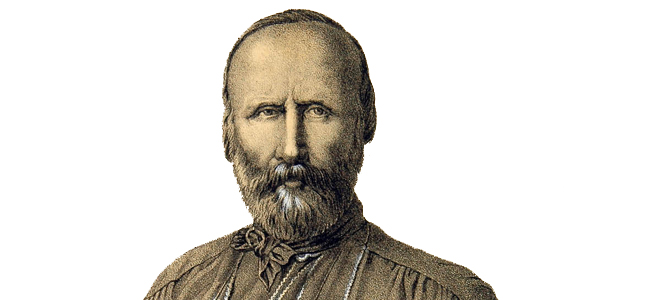 What links Garibaldi to the churchyard of Abbiategrasso? There are at least two link elements: one historical, the other artistic.
What links Garibaldi to the churchyard of Abbiategrasso? There are at least two link elements: one historical, the other artistic.
The historic one regards the designer, an Abbiatense engineer, Giuseppe Borsani, described in the plaque celebrating him in Marconi Square: "Volunteer with Garibaldi", as well as Member of Parliament and Mayor, "Firm Apostle of right - freedom - progress". He was born in 1850 and died in 1906, he was the project author of the new churchyard, carried out coming back from the campaigne of Italy, from 1890 and in 1913 has definitely replaced the old churchyard dating back to 1784 that was in today's Vittorio Veneto Square, where Serafino Dell'Uomo was buried too.
Just the stylistic differences between the two churchyards lead us to the second link with the Italian Risorgimento: the oldest was in perfect neoclassical style, consisting of a Doric temple which introduced to an open space with in the middle another temple similar but smaller. It is in short, the typical eighteenth-century churchyard of a severe and modern elegance close to Porta Ticinese in Milan by Cagnola. It's a pity it was destroyed , but the photographe we find in Parodi's volume allows us the comparation with the one realized by the Abbiatense garibaldian still used today: the new curchyard is in fact in a completely different style, on the model of the Monumental Curchyard in Milan, that is in the usual eclecticism of the second half of the nineteenth century.
Also in Abbiategrasso we find the mixture of styles which recalls the Renaissance, in arcades, in columns, in the ground floor windows of the entrance; the Gothic in the pinnacles of the main chapel; the Romanesque in arches, in black and white bands; and then, Etruscan and Early Christian recalls. And again: Tuscany in two colors bands, Venice in domes, Milan in pinnacles; in short, the new style is of the Risorgimento, it is the style of the united Italy: there are stylistic references to history and local particularities of the new nation, merged in buildings that must be mostly symbols, must teach and unify the country. But not only the predominance of the Romanesque style is related to the first fight against the invading foreigner: the famous Battle of Legnano, the Lombard League which defeated the Germans, is reviewed in the Risorgimento as a symbol of Italian freedom and as a model. This way come schools, churches, neo-Romanesque buildings, which are added to Gothic and early Christian recalls in sacred buildings, such as churchyards, like strengthening of Christian spirituality.
Here is the link with the Garibaldi age: while the neoclassical churchyard symbolized the rational loss of a spirit, a soul, a virtue; in the eclectic one is commemorated the loss of a history piece, a history that added piece by piece, year to year has led to progress and freedom , " Giuseppe Borsani ... Firm Apostle of right - freedom – progress"
Churchyard
- Papa Giovanni Avenue XXIII - 20081, Abbiategrasso, MI, Italy
- Telephone: + 39 02 94967415
References
- A. PALESTRA, Storia di Abbiategrasso, Milano, 1956
- P. PARODI, Notizie storiche del Borgo di Abbiategrasso, rist. anastatica: Bologna, 2002
 English (UK)
English (UK)  Italiano (Italia)
Italiano (Italia) 
